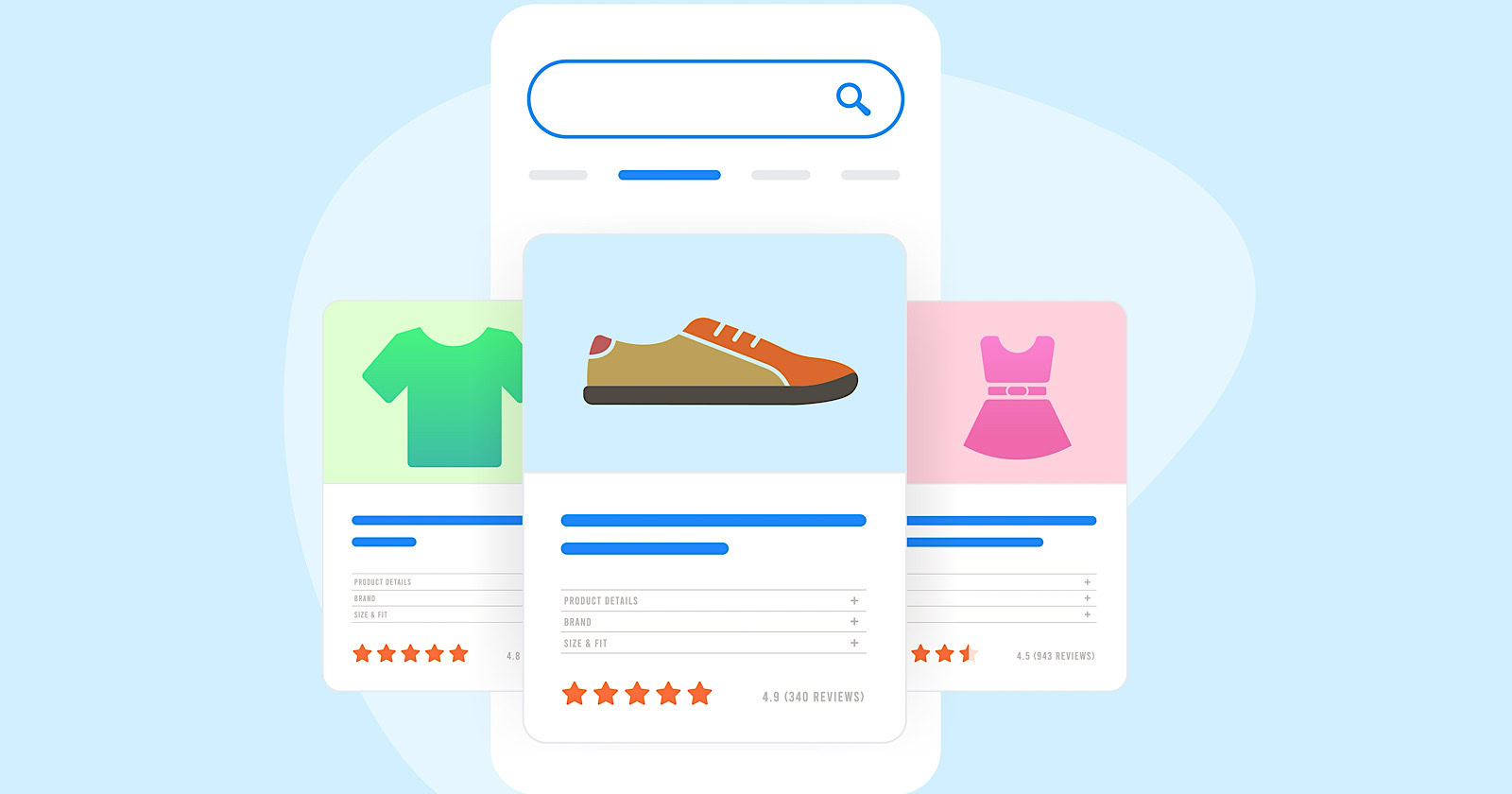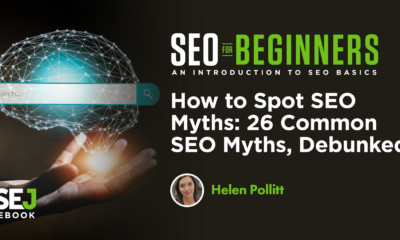SEO
Google PageSpeed Insights Reports: A Technical Guide

Nothing is more frustrating than a slow website.
Slow load times disrupt the overall user experience and have negative impacts on the conversion potential of your landing pages.
From an SEO perspective, Google is less likely to promote webpages that take too long to load.
Yes, site speed is a ranking factor, so taking the time to improve it can drastically improve your ranking positions.
So if you’re ready to go from slow to fast, Google’s PageSpeed Insights Report can help you identify whether or not your pages meet performance standards and, if not, how to improve them.
Use this guide to understand your PageSpeed Insights report and learn how to leverage it for better SERP performance.
What Is Page Speed?
Google defines page speed in two ways:
- How long it takes to display content above the fold.
- How long it takes a browser to fully render the page.
But a lot goes into how fast our webpages are. The user’s internet connection, a domain’s web hosting service, and cache clearance can impact load times.
So when we talk about page speed, some elements are out of the site owner’s control. But there are plenty of elements that the webmaster can optimize, such as images, videos, JavaScript, and more.
Because page speed is so essential to the user experience, Google considers the overall performance of a page when determining whether to promote it in the SERPs.
Taking the time to optimize your content for speed shows Google that you want to create a high-quality experience for your site visitors.
What Is Google’s PageSpeed Insights (PSI)?
PageSpeed Insights is a free performance tool that analyzes the content of a given webpage and provides page speed scores for both the mobile and desktop versions of the page.
The tool also identifies opportunities for optimization and makes specific recommendations for improvement.
 Screenshot from pagespeed.web.dev, August 2022
Screenshot from pagespeed.web.dev, August 2022PageSpeed Insights is one of many page speed audit tools available to site owners, but it is by far the best for those interested in improving speed for SEO purposes.
With PageSpeed Insights, site owners can see in detail how Google understands the technical performance of their pages.
PageSpeed Insights And Ranking
Although site speed is a ranking factor, the PSI score is not. The score is designed as an estimated performance overview.
PSI isn’t a ranking factor, it’s just a “lab” tool to help you to find issues to work on. It does test from certain locations, so for PSI the location/network can play a role. It’s similar when you test locally with Lighthouse. Both do try to emulate general user connections too.
— 🥔 johnmu of switzerland (personal) 🥔 (@JohnMu) July 6, 2021
Some of the metrics the tool relies on to calculate PSI scores, like Core Web Vitals, are a part of Google’s ranking algorithm.
All of that is to say that PSI scores are a good indication of whether or not your pages are meeting Google’s speed and performance standards. There is a strong correlation between higher scores and better keyword rankings.
When slow speed is left unresolved, any SEO strategy will be derailed by underperforming pages.
Page Speed And The User Experience
Beyond SEO, page speed is also essential to the overall user experience.
For mobile users, page load speed is considered the most important factor, even more so than quickly finding what they are looking for or the aesthetic quality of the page.
 Image source: SPEED MATTERS: Designing for Mobile Perfomance by awwwards.com, August 2022
Image source: SPEED MATTERS: Designing for Mobile Perfomance by awwwards.com, August 2022A one to three-second delay increases the visitor’s likelihood to bounce by 32%.
Worse, conversion rates drop by an average of 4.42% with every additional second of load time.
Improving site speed is non-negotiable to any search engine optimization and conversion optimization strategy.
Google’s PSI tool is the best place to get started to understand your site speed and how to improve it.
Using The PageSpeed Insights Tool
To use Google’s PSI tool, enter any URL into the toolbar, press Analyze, and PSI will get to work.
 Screenshot from pagespeed.web.dev, August 2022
Screenshot from pagespeed.web.dev, August 2022As you wait for your report to generate, the tool is doing two main things.
First, it’s gathering the page’s “Field Data,” or the performance data contained in the Chrome User Experience Report (CrUX).
Second, it measures your page performance via the Lighthouse API. This is called “Lab Data” because it measures the webpage’s speed in a simulated, controlled environment: mobile networks and a mid-tier device.
This helps eliminate some variables that can impact a webpage’s speed and performance.
Understanding Your PSI Report
Google’s PSI tool will generate a detailed report that includes Core Web Vitals assessment, Lighthouse lab data, opportunities, diagnostics, and passed audits.
 Screenshot from pagespeed.web.dev, August 2022
Screenshot from pagespeed.web.dev, August 2022Throughout the PSI report, color coding makes it easy to understand the areas where the page is performing well, still needs improvement, or is underperforming.
- Green = Good.
- Yellow = Needs Improvement.
- Red = Poor.
Here is how to interpret the information in each area of the report.
Core Web Vitals Assessment (Field Data)
PSI’s Core Web Vitals data comes from the Chrome UX Report and includes three primary metrics. Each captures a different aspect of speed and load time.
 Screenshot from pagespeed.web.dev, August 2022
Screenshot from pagespeed.web.dev, August 2022- First Contentful Paint (FCP): The time it takes for the first text or image asset to load.
- Largest Contentful Paint (LCP): The time it takes for the largest text or image asset to load.
- First Input Delay (FID): The time it takes for the browser to respond to the user’s first interaction.
- Cumulative Layout Shift (CLS): This measures any movement of the page in the viewport.
Each performance metric is measured in seconds or milliseconds, except for Cumulative Layout Shift (CLS).
CLS is calculated through a specialized formula. A CLS score below 0.1 is considered good, while a CLS score above .25 is considered poor.
The field data presented in the report comes from the previous 28 days and will always be presented with accompanying distribution bars.
That’s because Field Data is made up of aggregated data from the CrUX report, and the same webpage never performs the same way for all users.
For example, in the above report, the page met FCP standards 69% of the time but failed to meet those standards 31% of the time.
Lab Data
Google’s PageSpeed Insights Lab Data includes synthetic data from the Lighthouse API. Lighthouse measures Core Web Vitals and three additional metrics.
 Screenshot from pagespeed.web.dev, August 2022
Screenshot from pagespeed.web.dev, August 2022- Speed Index: The time it takes for the content to visually appear during page load.
- Time to Interactive: The time it takes for the page to become fully interactive.
- Total Blocking Time: The sum of time between FCP and full interactivity.
Unlike Field Data, the metrics measured in the Lab Data will not contain a display bar but simply the time stamps or results from the lab test.
It’s important to note that some of these metrics carry more weight in the overall PSI score. Here is the current weighted rubric for Lab Data in Lighthouse 8.
 Screenshot from Lighthouse 8, August 2022
Screenshot from Lighthouse 8, August 2022Opportunities & Diagnostics
The Opportunities and Diagnostics sections provide specific recommendations for improving page speed.
 Screenshot from pagespeed.web.dev, August 2022
Screenshot from pagespeed.web.dev, August 2022The report also details the estimated time savings that following the recommendations could bring.
To get more details about the next steps, click on the dropdown arrow next to any given Opportunity in your report.
The tool will explain the issue and provide guidance on how to fix it.
 Screenshot from pagespeed.web.dev, August 2022
Screenshot from pagespeed.web.dev, August 2022Similarly, the Diagnostics section of the report details best practices that the webpage does not appear to be following based on the page analysis.
 Screenshot of pagespeed.web.dev, August 2022
Screenshot of pagespeed.web.dev, August 2022Select the dropdown arrow to get more information on the best practice and the specific data from the page’s analysis related to that issue.
 Screenshot from pagespeed.web.dev, August 2022
Screenshot from pagespeed.web.dev, August 2022The number of opportunities and diagnostics that may be listed in this section of the report is quite long and will depend on the specific issues that the PSI tool detects on the page.
Passed Audits
This section of the report basically lets site owners know what the page is doing right.
 Screenshot of pagespeed.web.dev, August 2022
Screenshot of pagespeed.web.dev, August 2022A long list of passed audits is a good sign and means that your page is displaying page speed best practices.
After The PSI Report & 6 Tips To Improve Page Speed
For those who are new to SEO, the PSI report can feel overwhelmingly technical.
But thankfully, Google is always thinking about the user and does a great job of providing detailed action items in the Opportunities section of the report.
Depending on the Opportunities and issues that the PSI tool identifies, the next steps for any site owner will vary.
However, some common issues impact page speed that webmasters tend to make.
The following best practices are some simple optimizations that can help improve speed and load times for the majority of webpages.
1. Optimize Your Images
More than any other content asset, images and videos are the most likely to produce issues related to a slower speed and load times.
Properly optimized images can go a long way in reducing FCP and LCP times and avoiding CLS issues.
Some best practices include:
2. Embed Video Content
If you have videos on your site that feature your products or services, avoid uploading them to your site.
Not only do they take up a lot of space, but they can also place stress on your web server if lots of users are playing the videos at the same time.
Instead, store videos somewhere else (like YouTube) and embed video content on your web page to significantly improve load times.
3. Avoid Excessive Redirects
Redirects can increase time-to-first-byte (TTFB) or the time between the request to the server and when the first data is sent back to the requester.
Avoiding excessive redirect chains can help you improve page speed and is a good practice for better SEO overall.
4. Choose A Faster Website Theme
Specific website themes are optimized for speed and can significantly improve your load times. Some themes are more lightweight, use GZIP compression, or have a more responsive design.
Check out this list of fast-loading WordPress themes, and consider whether you should update your theme to improve your PSI scores and overall SEO.
5. Use Asynchronous Loading For JavaScript
To keep it simple, asynchronous loading helps the web browser become a better multi-tasker.
In synchronous loading, the browser pauses all other actions while the JavaScript file loads.
Asynchronous loading lets the browser accomplish other tasks, like painting a table or loading a CSS Stylesheet, while simultaneously downloading the JavaScript.
This optimization requires more backend knowledge, so make sure you consult a web developer to implement this strategy.
6. Enable Browser Caching
This is a fundamental optimization that helps your webpages load faster for returning visitors.
With browser caching, images and videos will be stored on the user’s device and loaded from there the next time they visit the page.
Enabling browser caching requires editing (or creating) a .htaccess file, which is also better implemented by a skilled web developer.
Final Thoughts On PageSpeed Insights
Understanding PageSpeed Insights reports doesn’t require a technical SEO background.
Although specific fixes may require the assistance of your web developers, the PageSpeed Insights report will provide a clear roadmap to faster site speed.
If Google sees that you’ve taken the time to follow the recommendations in the report and provide searchers with a better quality web experience, they are more likely to reward you in the SERPs.
More Resources:
Featured Image: Roman Samborskyi/Shutterstock
SEO
Google Cautions On Blocking GoogleOther Bot

Google’s Gary Illyes answered a question about the non-search features that the GoogleOther crawler supports, then added a caution about the consequences of blocking GoogleOther.
What Is GoogleOther?
GoogleOther is a generic crawler created by Google for the various purposes that fall outside of those of bots that specialize for Search, Ads, Video, Images, News, Desktop and Mobile. It can be used by internal teams at Google for research and development in relation to various products.
The official description of GoogleOther is:
“GoogleOther is the generic crawler that may be used by various product teams for fetching publicly accessible content from sites. For example, it may be used for one-off crawls for internal research and development.”
Something that may be surprising is that there are actually three kinds of GoogleOther crawlers.
Three Kinds Of GoogleOther Crawlers
- GoogleOther
Generic crawler for public URLs - GoogleOther-Image
Optimized to crawl public image URLs - GoogleOther-Video
Optimized to crawl public video URLs
All three GoogleOther crawlers can be used for research and development purposes. That’s just one purpose that Google publicly acknowledges that all three versions of GoogleOther could be used for.
What Non-Search Features Does GoogleOther Support?
Google doesn’t say what specific non-search features GoogleOther supports, probably because it doesn’t really “support” a specific feature. It exists for research and development crawling which could be in support of a new product or an improvement in a current product, it’s a highly open and generic purpose.
This is the question asked that Gary narrated:
“What non-search features does GoogleOther crawling support?”
Gary Illyes answered:
“This is a very topical question, and I think it is a very good question. Besides what’s in the public I don’t have more to share.
GoogleOther is the generic crawler that may be used by various product teams for fetching publicly accessible content from sites. For example, it may be used for one-off crawls for internal research and development.
Historically Googlebot was used for this, but that kind of makes things murky and less transparent, so we launched GoogleOther so you have better controls over what your site is crawled for.
That said GoogleOther is not tied to a single product, so opting out of GoogleOther crawling might affect a wide range of things across the Google universe; alas, not Search, search is only Googlebot.”
It Might Affect A Wide Range Of Things
Gary is clear that blocking GoogleOther wouldn’t have an affect on Google Search because Googlebot is the crawler used for indexing content. So if blocking any of the three versions of GoogleOther is something a site owner wants to do, then it should be okay to do that without a negative effect on search rankings.
But Gary also cautioned about the outcome that blocking GoogleOther, saying that it would have an effect on other products and services across Google. He didn’t state which other products it could affect nor did he elaborate on the pros or cons of blocking GoogleOther.
Pros And Cons Of Blocking GoogleOther
Whether or not to block GoogleOther doesn’t necessarily have a straightforward answer. There are several considerations to whether doing that makes sense.
Pros
Inclusion in research for a future Google product that’s related to search (maps, shopping, images, a new feature in search) could be useful. It might be helpful to have a site included in that kind of research because it might be used for testing something good for a site and be one of the few sites chosen to test a feature that could increase earnings for a site.
Another consideration is that blocking GoogleOther to save on server resources is not necessarily a valid reason because GoogleOther doesn’t seem to crawl so often that it makes a noticeable impact.
If blocking Google from using site content for AI is a concern then blocking GoogleOther will have no impact on that at all. GoogleOther has nothing to do with crawling for Google Gemini apps or Vertex AI, including any future products that will be used for training associated language models. The bot for that specific use case is Google-Extended.
Cons
On the other hand it might not be helpful to allow GoogleOther if it’s being used to test something related to fighting spam and there’s something the site has to hide.
It’s possible that a site owner might not want to participate if GoogleOther comes crawling for market research or for training machine learning models (for internal purposes) that are unrelated to public-facing products like Gemini and Vertex.
Allowing GoogleOther to crawl a site for unknown purposes is like giving Google a blank check to use your site data in any way they see fit outside of training public-facing LLMs or purposes related to named bots like GoogleBot.
Takeaway
Should you block GoogleOther? It’s a coin toss. There are possible potential benefits but in general there isn’t enough information to make an informed decision.
Listen to the Google SEO Office Hours podcast at the 1:30 minute mark:
Featured Image by Shutterstock/Cast Of Thousands
SEO
AI Search Boosts User Satisfaction

A new study finds that despite concerns about AI in online services, users are more satisfied with search engines and social media platforms than before.
The American Customer Satisfaction Index (ACSI) conducted its annual survey of search and social media users, finding that satisfaction has either held steady or improved.
This comes at a time when major tech companies are heavily investing in AI to enhance their services.
Search Engine Satisfaction Holds Strong
Google, Bing, and other search engines have rapidly integrated AI features into their platforms over the past year. While critics have raised concerns about potential negative impacts, the ACSI study suggests users are responding positively.
Google maintains its position as the most satisfying search engine with an ACSI score of 81, up 1% from last year. Users particularly appreciate its AI-powered features.
Interestingly, Bing and Yahoo! have seen notable improvements in user satisfaction, notching 3% gains to reach scores of 77 and 76, respectively. These are their highest ACSI scores in over a decade, likely due to their AI enhancements launched in 2023.
The study hints at the potential of new AI-enabled search functionality to drive further improvements in the customer experience. Bing has seen its market share improve by small but notable margins, rising from 6.35% in the first quarter of 2023 to 7.87% in Q1 2024.
Customer Experience Improvements
The ACSI study shows improvements across nearly all benchmarks of the customer experience for search engines. Notable areas of improvement include:
- Ease of navigation
- Ease of using the site on different devices
- Loading speed performance and reliability
- Variety of services and information
- Freshness of content
These improvements suggest that AI enhancements positively impact various aspects of the search experience.
Social Media Sees Modest Gains
For the third year in a row, user satisfaction with social media platforms is on the rise, increasing 1% to an ACSI score of 74.
TikTok has emerged as the new industry leader among major sites, edging past YouTube with a score of 78. This underscores the platform’s effective use of AI-driven content recommendations.
Meta’s Facebook and Instagram have also seen significant improvements in user satisfaction, showing 3-point gains. While Facebook remains near the bottom of the industry at 69, Instagram’s score of 76 puts it within striking distance of the leaders.
Challenges Remain
Despite improvements, the study highlights ongoing privacy and advertising challenges for search engines and social media platforms. Privacy ratings for search engines remain relatively low but steady at 79, while social media platforms score even lower at 73.
Advertising experiences emerge as a key differentiator between higher- and lower-satisfaction brands, particularly in social media. New ACSI benchmarks reveal user concerns about advertising content’s trustworthiness and personal relevance.
Why This Matters For SEO Professionals
This study provides an independent perspective on how users are responding to the AI push in online services. For SEO professionals, these findings suggest that:
- AI-enhanced search features resonate with users, potentially changing search behavior and expectations.
- The improving satisfaction with alternative search engines like Bing may lead to a more diverse search landscape.
- The continued importance of factors like content freshness and site performance in user satisfaction aligns with long-standing SEO best practices.
As AI becomes more integrated into our online experiences, SEO strategies may need to adapt to changing user preferences.
Featured Image: kate3155/Shutterstock
SEO
Google To Upgrade All Retailers To New Merchant Center By September

Google has announced plans to transition all retailers to its updated Merchant Center platform by September.
This move will affect e-commerce businesses globally and comes ahead of the holiday shopping season.
The Merchant Center is a tool for online retailers to manage how their products appear across Google’s shopping services.
Key Changes & Features
The new Merchant Center includes several significant updates.
Product Studio
An AI-powered tool for content creation. Google reports that 80% of current users view it as improving efficiency.
This feature allows retailers to generate tailored product assets, animate still images, and modify existing product images to match brand aesthetics.
It also simplifies tasks like background removal and image resolution enhancement.
Centralized Analytics
A new tab consolidating various business insights, including pricing data and competitive analysis tools.
Retailers can access pricing recommendations, competitive visibility reports, and retail-specific search trends, enabling them to make data-driven decisions and capitalize on popular product categories.
Redesigned Navigation
Google claims the new interface is more intuitive and cites increased setup success rates for new merchants.
The platform now offers simplified website verification processes and can pre-populate product information during setup.
Initial User Response
According to Google, early adopters have shown increased engagement with the platform.
The company reports a 25% increase in omnichannel merchants adding product offers in the new system. However, these figures have yet to be independently verified.
Jeff Harrell, Google’s Senior Director of Merchant Shopping, states in an announcement:
“We’ve seen a significant increase in retention and engagement among existing online merchants who have moved to the new Merchant Center.”
Potential Challenges and Support
While Google emphasizes the upgrade’s benefits, some retailers, particularly those comfortable with the current version, may face challenges adapting to the new system.
The upgrade’s mandatory nature could raise concerns among users who prefer the existing interface or have integrated workflows based on the current system.
To address these concerns, Google has stated that it will provide resources and support to help with the transition. This includes tutorial videos, detailed documentation, and access to customer support teams for troubleshooting.
Industry Context
This update comes as e-commerce platforms evolve, with major players like Amazon and Shopify enhancing their seller tools. Google’s move is part of broader efforts to maintain competitiveness in the e-commerce services sector.
The upgrade could impact consumers by improving product listings and providing more accurate information across Google’s shopping services.
For the e-commerce industry as a whole, it signals a continued push towards AI-driven tools and data-centric decision-making.
Transition Timeline
Google states that retailers will be automatically upgraded by September if they still need to transition.
The company advises users to familiarize themselves with the new features before the busy holiday shopping period.
Featured Image: BestForBest/Shutterstock
-

 SEARCHENGINES5 days ago
SEARCHENGINES5 days agoBillions Of Google goo.gl URLs To 404 In The Future
-

 SEO7 days ago
SEO7 days ago26 Common SEO Myths, Debunked
-
SEARCHENGINES4 days ago
Daily Search Forum Recap: July 22, 2024
-

 SEARCHENGINES6 days ago
SEARCHENGINES6 days agoGoogle Core Update Coming, Ranking Volatility, Bye Search Notes, AI Overviews, Ads & More
-

 SEO5 days ago
SEO5 days ago11 Copyscape Alternatives To Check Plagiarism
-

 SEO6 days ago
SEO6 days agoGoogle Warns Of Last Chance To Export Notes Search Data
-
SEARCHENGINES3 days ago
Daily Search Forum Recap: July 23, 2024
-

 AFFILIATE MARKETING6 days ago
AFFILIATE MARKETING6 days agoThe Top 5 AI Tools That Can Revolutionize Your Workflow and Boost Productivity
















You must be logged in to post a comment Login